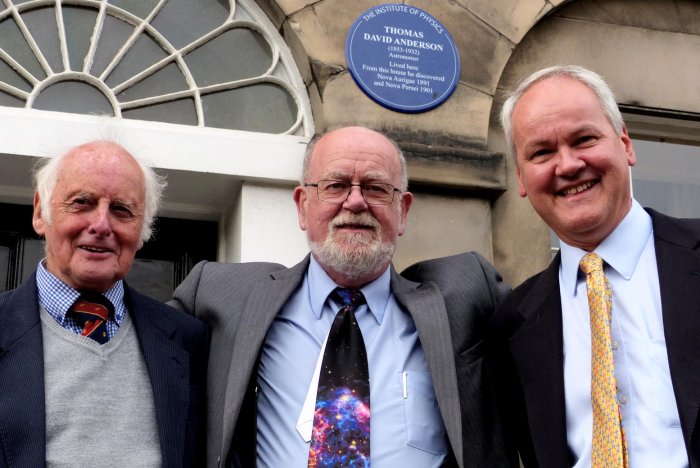Thomas David Anderson

Thomas David Anderson

A Blue Plaque was recently unveiled at the Edinburgh residence of Thomas David Anderson (1853 –1932), a Scottish amateur astronomer who discovered two bright novae. Nova Aurigae 1891, the first nova to have its spectrum photographed, and Nova Persei 1901 (GK Per) were found by Anderson from his residence at 21 East Claremont Street, in the city’s New Town. He also discovered more than 50 variable stars as well as making independent discoveries of Nova Aquilae 1918 and comet 17P/Holmes in 1892 and yet his achievements are largely unknown today, even in his home city. Of course GK Per is still regularly monitored by variable star observers around the world and since the mid 1960’s has shown dwarf nova outbursts. The unveiling was conducted by Professor John Brown, Astronomer Royal for Scotland.
A second plaque was also unveiled to another Edinburgh astronomer on the same day: Thomas Henderson (1798-1844), the 1st Astronomer Royal for Scotland who lived at 1 Hillside Crescent. Henderson was the first person to measure the distance to alpha Centauri, using the technique of parallax measurements.
During an accompanying seminar, short presentations on Henderson’s life were given by the BAA’s Dave Gavine and by John Brown, whilst Jeremy Shears covered Anderson. The plaques were erected by the Institute of Physics Scotland Branch as part of their project to commemorate important Scottish astronomers.
J. Shears,
October 10 2014